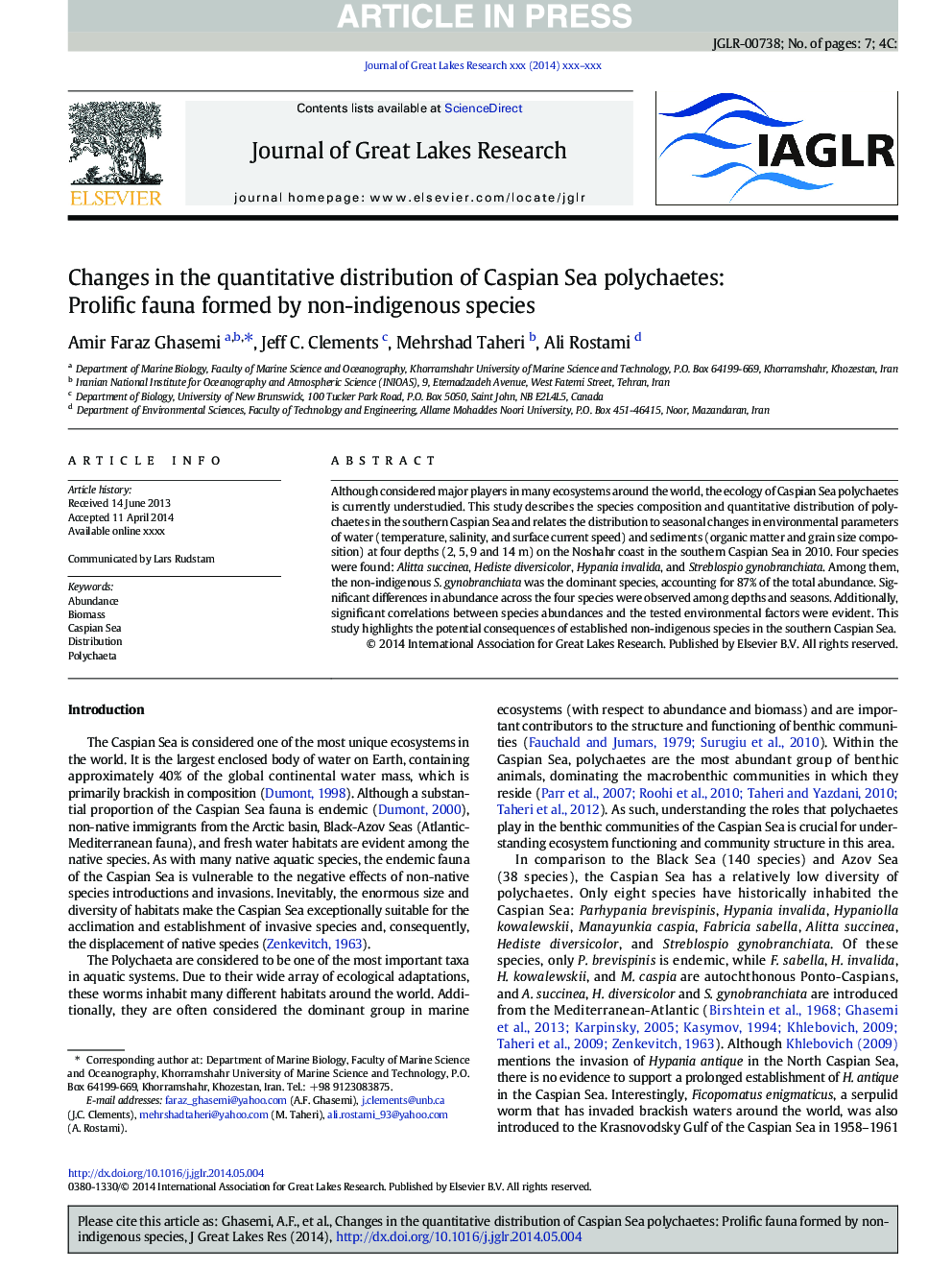| Article ID | Journal | Published Year | Pages | File Type |
|---|---|---|---|---|
| 6305308 | Journal of Great Lakes Research | 2014 | 7 Pages |
Abstract
Although considered major players in many ecosystems around the world, the ecology of Caspian Sea polychaetes is currently understudied. This study describes the species composition and quantitative distribution of polychaetes in the southern Caspian Sea and relates the distribution to seasonal changes in environmental parameters of water (temperature, salinity, and surface current speed) and sediments (organic matter and grain size composition) at four depths (2, 5, 9 and 14Â m) on the Noshahr coast in the southern Caspian Sea in 2010. Four species were found: Alitta succinea, Hediste diversicolor, Hypania invalida, and Streblospio gynobranchiata. Among them, the non-indigenous S. gynobranchiata was the dominant species, accounting for 87% of the total abundance. Significant differences in abundance across the four species were observed among depths and seasons. Additionally, significant correlations between species abundances and the tested environmental factors were evident. This study highlights the potential consequences of established non-indigenous species in the southern Caspian Sea.
Related Topics
Physical Sciences and Engineering
Earth and Planetary Sciences
Earth and Planetary Sciences (General)
Authors
Amir Faraz Ghasemi, Jeff C. Clements, Mehrshad Taheri, Ali Rostami,
